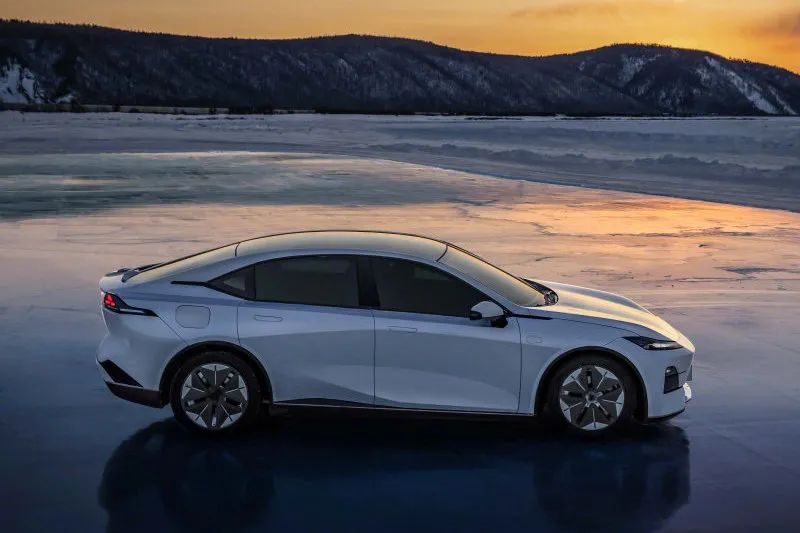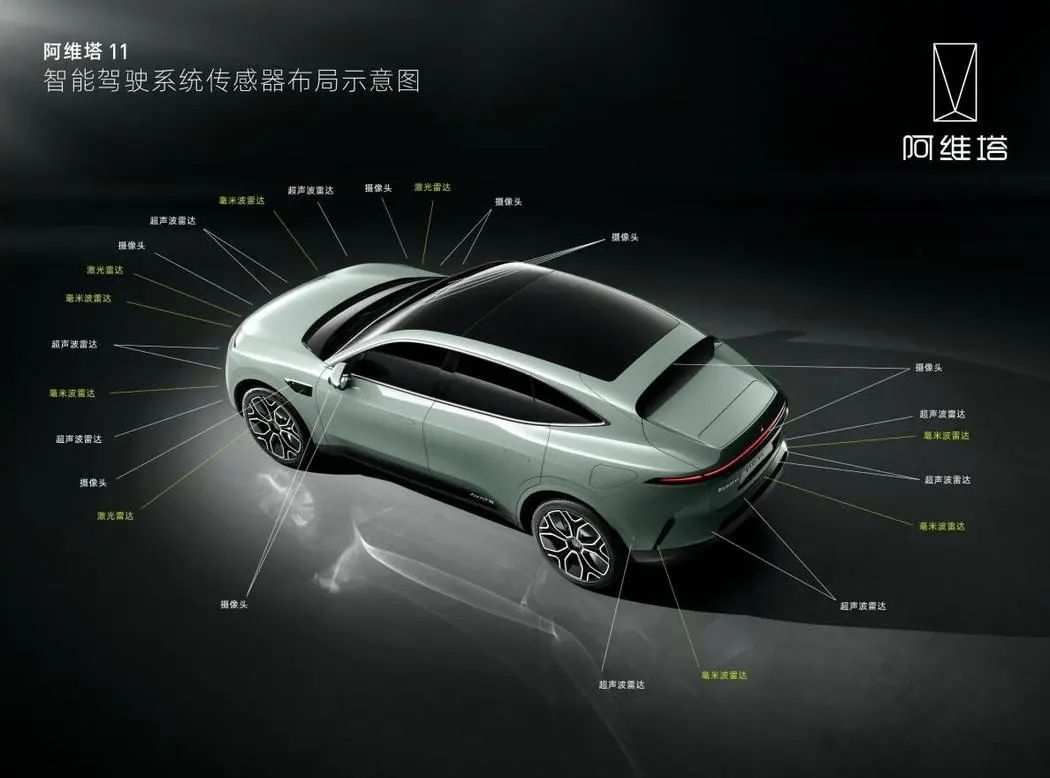Author: Michelin
You may never know how many electric car brands there are in China, because they emerge like spring mushrooms or summer fungi with fresh faces from time to time.
Last week, the brand Avita, which is jointly developed by Changan, CATL and Huawei, released the limited edition Avita 11 with Matthew M. Williams, designer of Givenchy. A week later, a new brand called Changan Shenlan was unveiled at Changan’s partner conference, along with Changan’s strategy for coping with the electrification transformation.

As the saying goes, “two fists are no match for four hands”. I don’t know when it started, but establishing new brands has become a common practice for Chinese domestic automakers to more precisely target the increasingly refined intelligent vehicle market.
However, each new brand’s birth is a start from scratch for both the product and the brand, requiring courage to take a risk. Will Changan, returning with “Shenlan”, be able to break through in the competition?
From Avita to Shenlan: a narrow road meets a head-on clash or fighting on multiple fronts?
Before Changan Shenlan, there was another new brand from Changan called Avita.
This brand, which adopts the “CHN” technology platform, carries the expectations of Changan, CATL, and Huawei in intelligence, electrification, and automobile. As a brand for high-end intelligent electric vehicle market, Avita brings Changan back to the most fiercely competitive battleground of intelligent electric vehicles.

Because of this, when Changan once again released “Changan Shenlan”, many people asked: why another new brand?
Different from the high-end route jointly established by Avita with CATL and Huawei, Changan Shenlan is built on Changan’s independent research and development of the EPA platform, which can be seen as Changan’s “own son”, integrating all of Changan’s new energy resources.
In Changan’s own words, the five products planned under Shenlan are mainly “aimed at new energy users in the Z era”. C385 will be officially released in the second half of this year, and C673 will be released within this year. If Avita bears the task of Changan brand upgrade and targets the high-end electric vehicle market, then Shenlan is more like Changan’s brave general in the new energy field, bearing the task of “scaling up” and targeting the larger and younger mid-range electric vehicle market.
 Meanwhile, Changan also announced the UNI series as an independent brand. UNI has been focusing on high-end and youthful branding for the past two years, and will now operate as a completely new independent brand with a focus on plug-in hybrid vehicles, alongside its full electrification strategy, targeting the plug-in hybrid market.
Meanwhile, Changan also announced the UNI series as an independent brand. UNI has been focusing on high-end and youthful branding for the past two years, and will now operate as a completely new independent brand with a focus on plug-in hybrid vehicles, alongside its full electrification strategy, targeting the plug-in hybrid market.
Avita targets the high-end pure electric vehicle market, while Changan Shenlan focuses on the larger-scale mid-range pure electric market. Brands such as Changan Passenger Cars, Oushang, and Kaicheng under Changan’s umbrella will also have their respective paths towards electrification. Changan utilizes different sub-brands to target the smart car market’s segmented areas, allowing them to enter the market unencumbered and more agile.
As an example under the Shenlan brand, the previously rumored C385, looking similar to the UNI-V model, will be released as Shenlan’s first vehicle this year. The new brand identity of Shenlan creates a clearer pedigree for the pure electric platform developed for the C385.
For a new brand, the current market for electric vehicles is both the best of times and the worst of times. While intelligent electric vehicles bring all players, including traditional automakers, new challengers, and independently-owned brands, to the same starting line, there is fierce competition on this playing field, requiring products to prove themselves through substantial merits, putting greater pressure on the developing product lines of new brands.
Where does Changan’s determination lie in speeding up electrification? As one of the earliest domestic automakers to propose the 2025 Plan, Changan announced the Shangri-La Plan in 2017, aiming to “join the first camp of new energy vehicles by 2020 and stop selling fuel vehicles by 2025.” However, looking at the year 2022, it is obvious that Changan needs to speed up its plans. In fact, Changan has set new goals: the company expects a 6.5% year-on-year increase in sales in 2022, with independent brands increasing 5.9% to 1.857 million vehicles. Moreover, the company set new energy automobile sales targets of 1.05 million units under its independent brand, equating to 35% by 2025, and aims to increase the sales number to 2.7 million units, accounting for 60% of its independent brand, by 2030.

To achieve this goal, Changan on the one hand refines the brand, and on the other hand accelerates the landing speed of new energy products.
This year, Changan will launch a total of 36 new products, including 19 independent brand products and 8 new energy products. Within the year, Changan will launch 5 new products, including C385EV, C673EV, UNI-KPHEV, UNI-V PHEV, and Oushang Z6-PHEV, as well as the first domestically produced hydrogen fuel cell sedan, with products starting with “C” being electric vehicles under Shenlan. In the future, Changan will also launch a small car named LUMIN. The new products cover different types of vehicles such as micro-cars, mainstream electric vehicles, and high-end intelligent electric vehicles.

While accelerating the landing of products, core technology reserves are also key to electrification transformation.
Currently, Changan has independently mastered more than 400 core technologies in the field of new energy, and basically mastered the three electric technologies of “electric drive technology, battery technology, and electronic control technology.” For example, in 2021, Changan released a new generation of seven-in-one ultra-micro electric drive, which is an electric drive system that integrates the motor, reducer and other assemblies in depth, and also globally premiered high-frequency pulse heating technology for electric drives.
In addition to the three electric systems, Changan has developed a “seven-in-one” intelligent vehicle domain controller — Changan Smart Core SVDC. It also has MPA architecture compatible with ICE and its electrified products, EPA architecture for mainstream pure electric vehicle markets, deep blue brand vehicle models, and CHN platform jointly developed with Huawei and Ningde Times.

At the same time, Changan’s investment in the core technology fields of 800V high-voltage pure electric platform, oil-cooled motor technology, battery-chassis integrated design, and mass production and application of (semi-) solid-state batteries is still increasing. According to Changan’s plan, by 2025, Changan will invest more than 80 billion yuan in the fields of new energy, intelligentization, technological innovation, and digital transformation.
FinallyFacing the war of electrification transformation, some people choose to “burn their bridges”, such as BYD which announced to stop producing fuel cars two weeks ago; while others choose to “go all out”, such as Changan, by launching a new brand to demonstrate their determination for the electrification transformation of independent brands.
As for independent brands like Changan, launching a new brand is not the goal. The goal is how to draw a different picture on this “blank paper” than before and win the market. In today’s highly competitive electric vehicle market, can “Deep Blue” help Changan reclaim its own “blue ocean”?
This article is a translation by ChatGPT of a Chinese report from 42HOW. If you have any questions about it, please email bd@42how.com.
